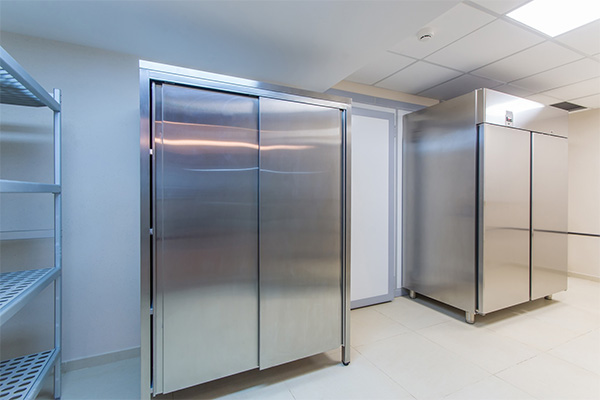
Finding easy and practical strategies to reduce stress and anxiety is essential amid our busy and often chaotic lives. One of the most accessible and powerful tools we can use to regain our calm and control is something we do every moment of our lives: breathing. Understanding the physiological and psychological impacts of proper breathing techniques can transform it from an involuntary action into a potent remedy for stress and anxiety.
The Science Behind Breathing and Relaxation
Breathing is inherently linked to our nervous system, particularly the autonomic system, which regulates many body processes that occur without conscious effort, like heartbeat and digestion.
This system divides into the parasympathetic nervous system (PNS), which initiates the “rest and digest” mode, and the sympathetic nervous system (SNS), which triggers the body’s “fight or flight” reaction. Effective breathing techniques engage the PNS, decreasing the heart speed and encouraging relaxation.
When we encounter stress, our breathing patterns change. Typically, it becomes quick and shallow, originating from the chest. This type of breathing triggers the SNS, increasing heart rate and blood pressure, thereby heightening feelings of anxiety.
Conversely, deep, slow breathing stimulates the PNS, helping to calm the body and mind. For this reason, activities that prioritize deep breathing, such as yoga and meditation, are frequently suggested for alleviating stress.
Breathing Techniques to Reduce Anxiety
Here are two breathing techniques that can help you reduce some of your anxiety.
Diaphragmatic Breathing
Frequently termed as “belly breathing,” this method entails taking deep breaths into the abdomen rather than the chest. To engage in diaphragmatic breathing, locate a comfortable sitting or lying posture. Grasp your tummy with one hand and your chest with the other. Inhale gradually through your nose, guaranteeing that your diaphragm expands adequately to induce a slight stretching sensation in your lungs.
However, your stomach should expand, not your chest. Pause briefly at the top of your inhale, then exhale slowly through your mouth or nose, pressing gently on your belly to expel all the air. For several minutes, repeat this practice while concentrating just on your breathing pattern.
4-7-8 Breathing
Referred to as the “relaxing breath,” this technique comprises inhaling for a count of four, holding the breath for a count of seven, and exhaling for a count of eight. It is an effective approach that aids in swiftly reducing anxiety.
Start by sitting with your back erect and your shoulders at ease. Close your eyes and take a profound, unhurried breath from your abdomen. Four counts of inhalation, seven seconds of retaining your breath, and eight times of audible exhalation through your mouth. This technique not only helps quiet the mind but also acts as a natural sedative for the nervous system.
There are many other personalized breathing exercises that you can try out to improve your well-being. Consider using tools like the breathing exercise device by OXA to try different breathing exercises in the correct way.
Integrating Breath Work into Everyday Life
Incorporating breathing exercises into your daily schedule does not have to feel overwhelming. It can be as simple as taking a few minutes each day to focus on your breath or incorporating these practices into activities you already do. Here are some tips to seamlessly integrate effective breathing techniques into your day:
- Morning Ritual: Spend a few minutes each day breathing diaphragmatically. This can help set a calm tone for the day ahead and prepare your mind and body to handle stress more effectively.
- Breathing Breaks: Replace your regular coffee break with a breathing break. Just five minutes of 4-7-8 breathing can significantly lower stress levels and boost your energy and focus for the rest of the day.
- Pre-Meeting Prep: Before entering a stressful meeting or situation, take a moment to perform some quick breathing exercises. This can help center your thoughts and reduce anxiety, allowing you to handle the situation more calmly and effectively.
- Wind Down: End your day with 10 minutes of mindful breathing to relax and de-stress before bed. This not only obliges relaxation but also enhances sleep quality.
The Cumulative Effects of Breath Work
Consistent practice of these breathing techniques can result in enduring enhancements in both your mental and physical well-being. Over time, you may notice reduced anxiety, better stress management, improved concentration, and a greater overall sense of well-being.
Furthermore, these practices can also have a positive impact on your physiological health by reducing blood pressure, improving lung function, and boosting immune response.
Breathing and Mental Health Therapies
Breathing techniques are often used in conjunction with other mental health therapies, such as Cognitive Behavioral Therapy (CBT) and mindfulness-based stress reduction programs. These therapies can help you understand the triggers of your anxiety better and learn how to use breath as a tool to manage them more effectively.
Guidance from Professionals
Although breathing exercises are typically safe and advantageous for the majority of individuals, those with respiratory conditions or other health issues should seek advice from a healthcare provider before commencing any new regimen. Furthermore, collaborating with a therapist or a breathing coach can offer tailored guidance and assistance to augment the efficacy of your practice.
Conclusion
Harnessing the power of your breath is an empowering tool that can dramatically improve your quality of life. By incorporating mindful breathing techniques into your daily routine, you can not only manage stress and anxiety more effectively but also enhance your overall health and well-being. Remember, like any skill, the benefits of breathing work increase with practice and consistency. So, breathe deeply and embark on your path to a more serene and grounded self.





